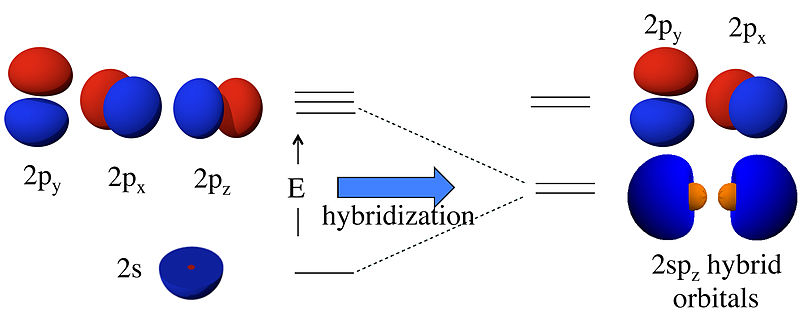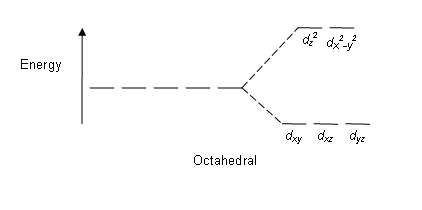Difference Between VBT and CFT
Key Difference – VBT vs CFT
The term VBT stands for valence bond theory. It is a theory used to describe the formation of different chemical bonds between atoms. This theory explains the overlapping or mixing of atomic orbitals to form chemical bonds. The term CFT stands for Crystal field theory. It is a model that is designed to explain the breaking of degeneracies (electron shells of equal energy) of electron orbitals (usually d or f orbitals) due to the static electric field produced by a surrounding anion or anions (or ligands). The key difference between VBT and CFT is that VBT explains the mixing of orbitals whereas CFT explains the splitting of orbitals.
CONTENTS
1. Overview and Key Difference
2. What is VBT
3. What is CFT
4. Side by Side Comparison – VBT vs CFT in Tabular Form
5. Summary
What is VBT
The term VBT stands for valence bond theory. It explains the chemical bonding of a covalent compound. Hence VBT explains how a covalent bond is formed. A covalent bond is formed via sharing of electrons between atoms. Atoms share electrons to fill their electron configuration (otherwise they are unstable). The electrons are shared by mixing or overlapping of atomic orbitals. But before overlapping occurs, several requirements should be fulfilled.
There are two types of covalent bonds as sigma bonds and pi bonds. These bonds are formed via the overlapping of atomic orbitals. Overlapping of s orbitals always forms sigma bonds. Overlapping of p orbitals causes the formation of pi bonds. The overlapping of s and p atomic orbitals cause the formation of hybrid orbitals; hence, the process is called hybridization.

Figure 01: Hybridization of 2s and 2p Orbitals
There are three major hybrid orbitals that can be formed:
What is CFT?
The term CFT stands for Crystal field theory. Crystals field theory is a model designed to explain the breaking of degeneracies (electron shells of equal energy) of electron orbitals (usually d or f orbitals) due to the static electric field produced by a surrounding anion or anions (or ligands). Crystal field theory is often used to demonstrate the behavior of transition metal ions complexes. This theory can also explain about magnetic properties, colors of coordination complexes, hydration enthalpies, etc.
Theory
The interaction between the metal ion and ligands is due to the attraction between the metal ion with a positive charge and the unpaired electrons (negative charge) of the ligand. This theory is mainly based on the changes that occur in five degenerate d electron orbitals (a metal atom has five d orbitals). When a ligand comes close to the metal ion, the unpaired electrons are closer to some d orbitals when compared with other d orbitals of the metal ion. This causes a loss of degeneracy. The electrons in the d orbitals repel the electrons of the ligand (both are negative charged). Hence the d orbitals that are closer to the ligand have a high energy than other d orbitals. This result in the splitting of d orbitals into high energy d orbitals and low energy d orbitals, based on the energy.
Some factors affecting this splitting include nature of the metal ion, the oxidation state of metal ion, arrangement of ligands around the central metal ion and the nature of ligands. After the splitting of these d orbitals based on energy, the difference between the high and low energy d orbitals is known as crystal-filed splitting parameter (∆oct for octahedral complexes).

Figure 02: Splitting Pattern in Octahedral Complexes
Splitting Pattern
Since there are five d orbitals, the splitting occurs in a ratio of 2:3. In octahedral complexes, two orbitals are in the high energy level (collectively known as eg) and three orbitals are in the lower energy level (collectively known as t2g). In tetrahedral complexes, the opposite occurs; three orbitals are in the higher energy level and two in the lower energy level.
What is the Difference Between VBT and CFT?
VBT vs CFT | |
| The term VBT stands for valence bond theory. | The term CFT stands for Crystal field theory. |
| Theory | |
| VBT is a theory that explains the formation of a covalent bond via hybridization of atomic orbitals. | CFT is a model that is designed to explain the breaking of degeneracies of electron orbitals due to static electric field produced by a surrounding anion or anions |
| Explanation | |
| VBT explains the mixing of orbitals. | CFT explains the splitting of orbitals. |
Summary – VBT vs CFT
The term VBT stands for valence bond theory. The term CFT stands for crystal field theory. The key difference between VBT and CFT is that VBT explains the mixing of orbitals whereas CFT explains the splitting of orbitals.
Reference:
1. “Crystal field theory.” Wikipedia, Wikimedia Foundation, 18 Feb. 2018, Available here.
2. “Valence Bond Theory.” Chemistry LibreTexts, Libretexts, 24 Jan. 2018, Available here.
Image Courtesy:
1. “Sp hybridization” By Tem5psu – Own work (CC BY-SA 3.0) via Commons Wikimedia
2. “Octahedral crystal-field splitting” By English Wikipedia user YanA (CC BY-SA 3.0) via Commons Wikimedia
ncG1vNJzZmivp6x7pbXFn5yrnZ6YsqOx07CcnqZemLyue8OinZ%2Bdopq7pLGMm5ytr5Wau27Cwa1kmqaUYsO0ecKfq2g%3D